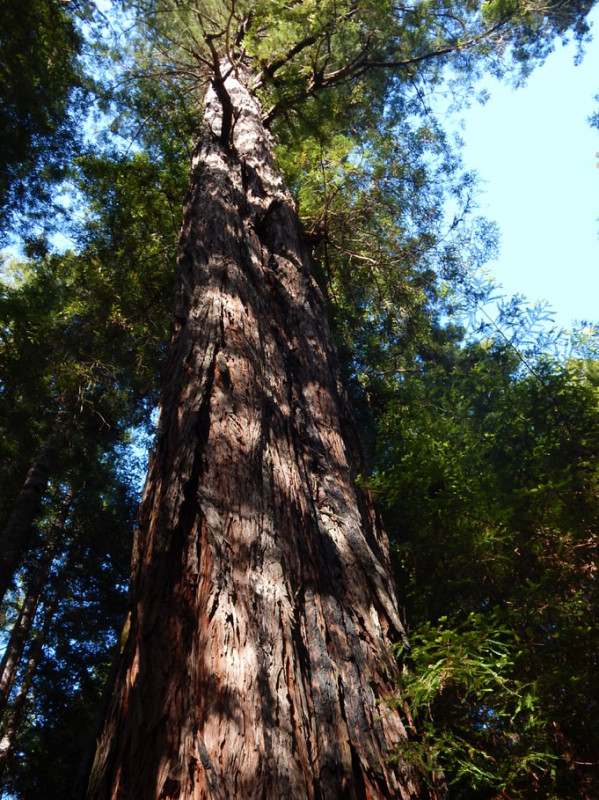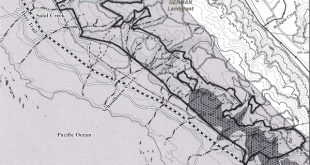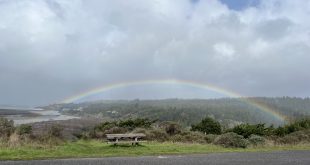by Guy Kovner, The Press Democrat, May 4, 2020
[excerpt:]
. . . Throughout their lives, the world’s tallest trees — Sequoia sempervirens, meaning “always flourishing” — absorb carbon dioxide, the most prolific heat-trapping gas, and permanently lock it up in their durable heartwood.
Coast redwoods are “a critical ingredient in the fight against climate change,” said Sam Hodder, president and CEO of Save the Redwoods League, the San Francisco-based nonprofit that has protected more than 216,000 acres of redwoods.
Old-growth redwood forests store more carbon — up to 890 metric tons per acre — than any other forest type in the world, with about triple the capacity of tropical rain forests, according to a study announced by the league last week.
Some second-growth redwood forests on land logged in the mid-1800s had accumulated as much as 339 metric tons of carbon per acre, said a study last year that was also a product of the 11-year research partnership between the league and Humboldt State University. . . .
In 2018, the league acquired a 730-acre forest north of Cazadero [in the Gualala River watershed – ed.], home to more than 300 old-growth redwoods over 250 feet. . . .
Recognizing redwoods as “our allies in the fight against climate [change],” Hodder said, “gives us all the more reason to accelerate the pace and scale of our efforts to protect and restore young, recovering forests and set them on course to become the old-growth forests of the future.” . . .
The Conservation Fund, a Virginia-based nonprofit, began buying second-growth redwood forests in Sonoma and Mendocino counties in 2004 with an eye on capturing carbon.
Young, fast-growing trees are “a carbon sponge, they soak it up,” said Chris Kelly, the fund’s California project director.
The fund now owns 74,000 acres of land [mostly in the Gualala & Garcia River watersheds – ed.] and last year gained just over 7 metric tons of carbon per forested acre, totaling about 485,000 metric tons.
Having spent $120 million on land acquisition — including the 19,645-acre Preservation Ranch in northwestern Sonoma County, renamed Buckeye Forest— The Conservation Fund has since earned $50 million from selling carbon credits to major polluters required by law to offset their greenhouse gas emissions, Kelly said.
. . .
To read the entire article, visit The Press Democrat:
California redwoods are tops in carbon storage needed to fight climate change, nonprofit says

 Friends of Gualala River Protecting the Gualala River watershed and the species living within it
Friends of Gualala River Protecting the Gualala River watershed and the species living within it


